Which of the following rate-limiting approaches are used on the Nokia 7750 SR? (Choose two)
Which of the following statements about behavior aggregate classification is TRUE?
Which of the following are the minimum requirements needed to classify traffic marked with DSCP AF11, AF12, and AF13 into the AF forwarding class and provide fair treatment to the drop precedence settings? (Choose three)
With hierarchical scheduling, up to ___________ tiers are supported on the Nokia 7750 SR.
Which of the following policies does NOT exist by default on a network port?
Click the exhibit button below. Each router is interconnected by a single GigE link, as shown in the diagram below.
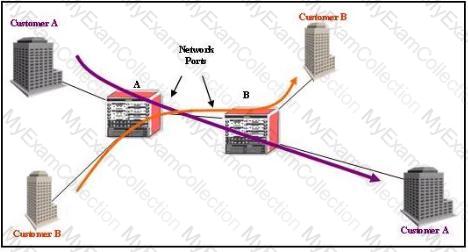
Note: The arrows show the direction of traffic flow.
Traffic from Customer A and Customer B that is classified to the same forwarding class is queued together at the ingress of Router B.
Real-time rate limiting on the service ingress is a feature that performs_____________. Traffic above the defined PIR is ______________.
What can be learned from the output of the command “show pools 1/2/2 network-egress†on the GigE port?
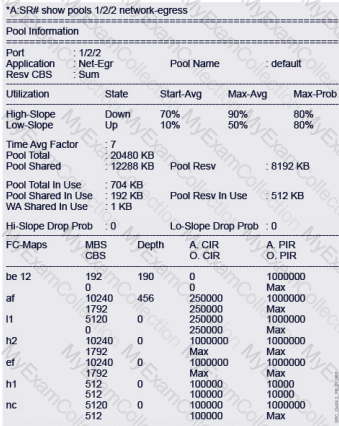
Which of the following statements about scheduling on the Nokia 7750 SR is FALSE?
Click the exhibit button below. Given the slope-policy (below), which of the following statements are TRUE? (Choose two)
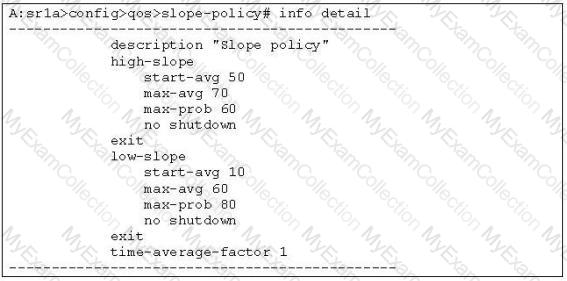
On the Nokia 7750 SR, where can network-queue policies be applied? (Choose two)
Which of the following statements about the consequences of congestion is TRUE?
A frame belonging to a Layer 2 service is encapsulated in an MPLS tunnel at a network-egress port. Which of the following fields in the frame can be marked or remarked at the network egress port?
Click the exhibit button below. A partial SAP-ingress policy configuration is shown below. A UDP video stream is sent to a PC with IP address 192.168.1.100. Given the SAP-ingress policy, to which forwarding class is the traffic matched?
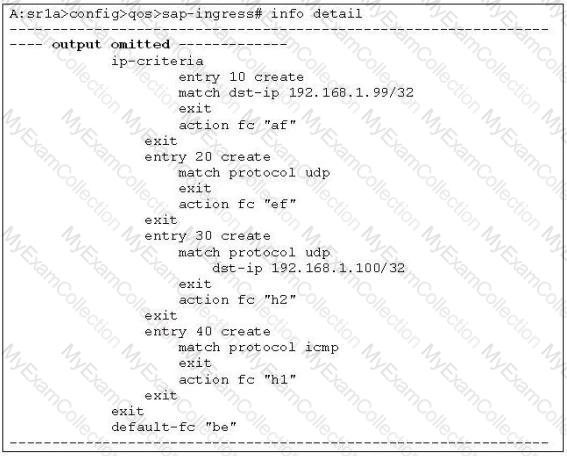
Which of the following criteria is an IP multi-field classification option?
If a packet is marked on a SAP-ingress, it will be remarked at the first network egress point (if remarking is enabled in the network egress policy).
Which of the following is NOT a reason for configuring a slope policy on a queue?
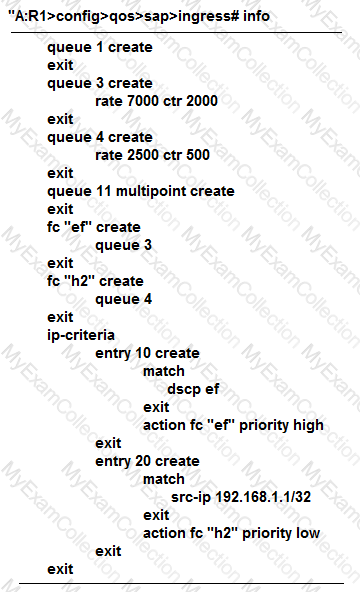
In the image shown above, the SAP-ingress policy is applied properly to a Nokia 7750 SR. A packet is received from an IP address of 192.168.2.2 with DSCP set to AF. Which forwarding class and priority level is assigned to this packet?
Click the exhibit button below. Given the scheduler-policy (below), how much bandwidth can the best-effort traffic receive (PIR and CIR) when the ingress rate of each queue is 10Mbps?
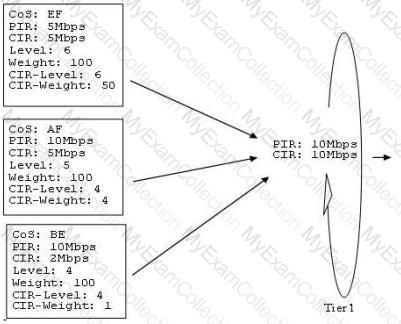
Click the exhibit button below.
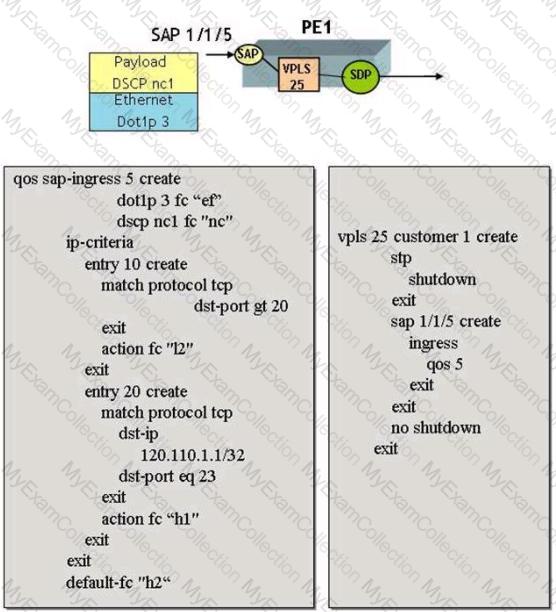
Based on the configuration shown below, name the forwarding class to be associated with a TCP packet encapsulated inside an Ethernet frame that arrives on SAP 1/1/5 with the following characteristics:
Destination IP address = 120.110.1.1
TCP port number = 23
DSCP value = nc1
Dot1pvalue = 3
Which of the following statements about Assured Forwarding (AF) Per Hop Behavior (PHB) groups is FALSE?
Which of the following is NOT an adaptation rule supported on the Nokia 7750 SR for calculating the operational CIR/PIR of a queue?
In which policies, on the Nokia 7750 SR. is classification performed? (Choose three)
A queue-group template can only contain policers (no queues) when applied under which conditions?

